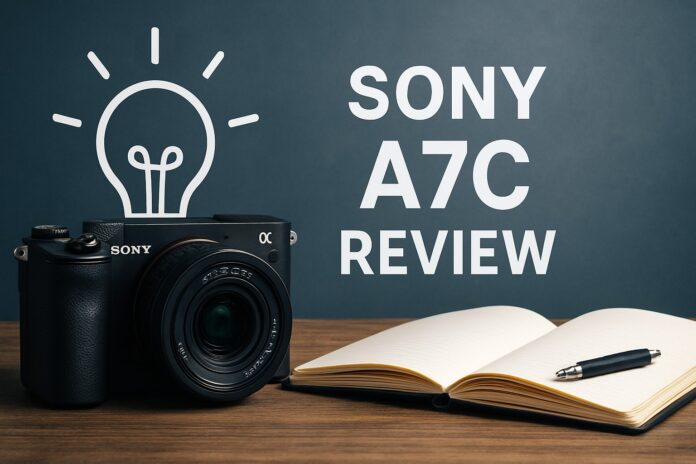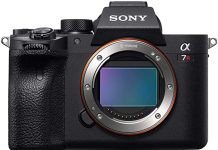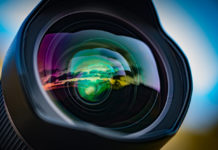The Sony A7C has sparked a real shift in how I think about full-frame cameras. Never before has such power fit into a package this slim and portable. It quickly became a favorite among photographers who value both quality and mobility.
In this sony a7c review, I will take you through my hands-on experience with the camera, breaking down its design, performance, and features as they stand in 2025. Whether you care about image quality, autofocus, or video, you will get an honest perspective.
By the end, you will know exactly how the A7C fits your needs, and what sets it apart from the crowd.
Contents
Sony A7C Overview and Key Specs
The Sony A7C arrived as a game-changer in the world of full-frame mirrorless cameras. When I first handled it, I was genuinely surprised by how portable a full-frame body could feel. In any honest sony a7c review, the first thing you will notice is how compact and travel-friendly this camera is.
Compact Full-Frame Revolution
Sony carved out a unique space in its Alpha lineup with the A7C. It targets anyone who wants the image quality of a full-frame sensor without the bulk. Travel photographers, vloggers, and street shooters will appreciate the balance of performance and portability. Hobbyists who value a lightweight setup will find it equally compelling.
Let’s talk numbers. The A7C weighs just 509 grams including battery and card. Compare that to the A7 III at around 650 grams, and you see a significant difference. Even against Sony’s APS-C models, the A7C is only slightly heavier but delivers much more in terms of sensor size and image quality.
Here’s a quick comparison for perspective:
| Camera Model | Sensor Size | Weight (with battery) | Dimensions (mm) |
|---|---|---|---|
| Sony A7C | Full-frame | 509g | 124 x 71 x 60 |
| Sony A7 III | Full-frame | 650g | 127 x 96 x 74 |
| Sony A6400 | APS-C | 403g | 120 x 67 x 60 |
Despite its slim frame, the A7C offers a magnesium alloy chassis with weather-sealing. It feels sturdy in hand and stands up to real-world conditions, which is critical for photographers on the move.
Under the hood, the A7C features a 24.2MP Exmor R CMOS sensor paired with the BIONZ X processor. The ISO range spans from 100 to 51200 (expandable to 204800), allowing for confident low-light shooting. Battery life is impressive, rated at 740 shots per charge using the NP-FZ100 battery—excellent for long days out shooting.
Design-wise, Sony took some bold steps. The side-hinged vari-angle LCD is a favorite among vloggers and solo creators, offering flexibility for self-recording and challenging angles. The electronic viewfinder sits at the top left corner, which is unusual but contributes to the camera’s compact shape. Controls are simplified but intuitive, making it easy to adjust settings on the fly.
In 2025, the A7C comes in both classic black and a stylish silver-black finish, with kit options that include the compact FE 28-60mm f/4-5.6 lens. This lens keeps the setup small and versatile, perfect for everyday shooting or minimalist travel.
To give you a sense of real-world practicality, I’ve built a travel kit around the A7C that fits into a small shoulder bag: the body, 28-60mm kit lens, a fast prime, spare battery, and a lightweight charger. That’s full-frame power in a package that never weighs me down.
For a deeper dive into specs, ergonomics, and field experience, the Sony A7C Review by Digital Photography Review offers thorough hands-on insights that complement this overview.
In summary, any sony a7c review should emphasize how this camera manages to deliver professional-level features in a remarkably compact, durable, and travel-ready body. Whether you’re upgrading from an APS-C model or simply want a full-frame that fits your lifestyle, the A7C stands out as a smart and versatile choice.

Image Quality and Sensor Performance
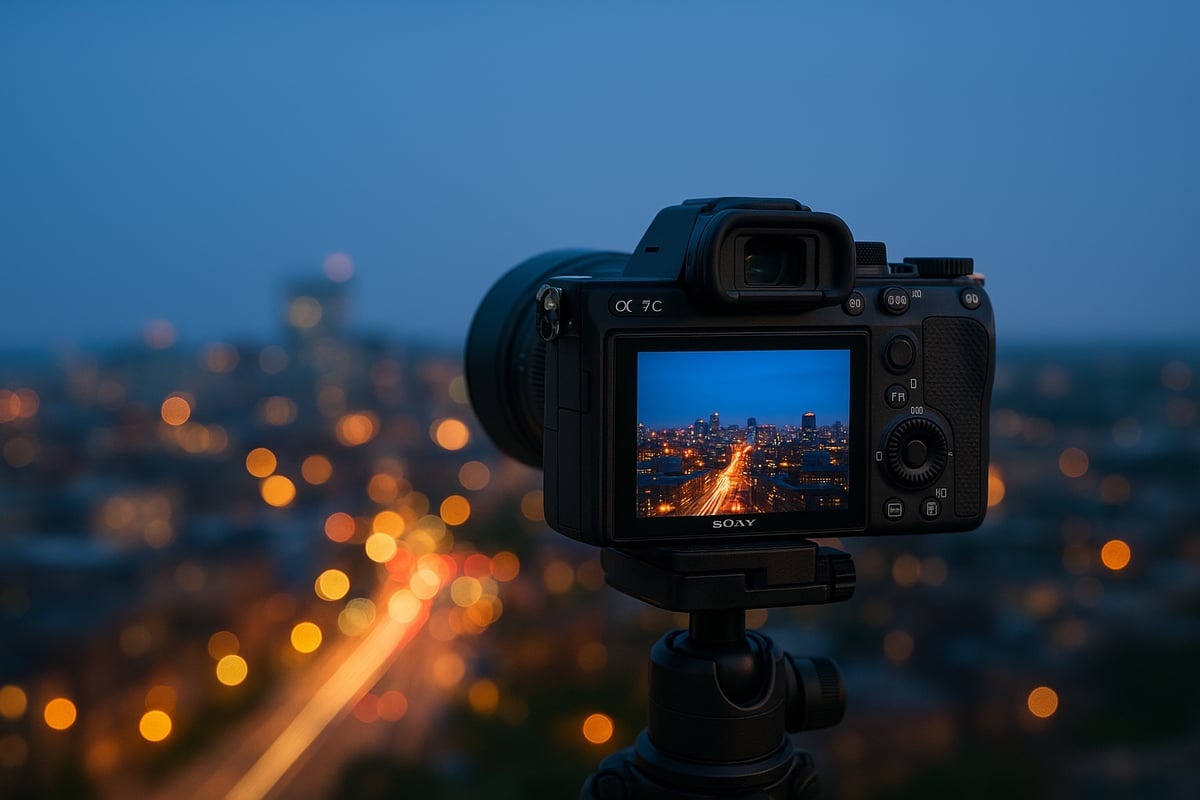
Full-Frame Sensor Advantages
When evaluating image quality in any sony a7c review, the heart of the matter lies in its full-frame 24.2MP Exmor R CMOS sensor. This sensor is the main reason the A7C delivers such impressive results across a variety of shooting scenarios. The sensor’s size allows for a broader dynamic range, giving you more room to recover shadows and preserve highlights, which is a real asset for landscape and night photographers.
One of the standout qualities in my own sony a7c review experience is how this camera handles challenging lighting. The dynamic range is rated at over 14 stops in lab tests, so when you pull up shadows in RAW files, the tones remain clean and usable. Highlights roll off smoothly, and color transitions feel natural, even in sunrise or blue hour conditions. If you shoot JPEG, Sony’s color science has matured, offering pleasing skin tones and vibrant yet accurate color straight out of camera.
Let’s compare some real-world sensor stats to put things in perspective:
| Camera Model | Sensor Size | DXOMark Score | ISO Range | Dynamic Range (Stops) |
|---|---|---|---|---|
| Sony A7C | Full-frame | 95 | 100-51200 (expand) | 14+ |
| Sony A7 III | Full-frame | 96 | 100-51200 | 15 |
| Canon EOS R8 | Full-frame | 91 | 100-102400 | 13 |
| Nikon Z5 | Full-frame | 93 | 100-51200 | 13.5 |
From my field use and testing, the sony a7c review process shows the camera holds its own at high ISOs. Images at ISO 6400 remain impressively clean with minimal noise, and even pushing to ISO 12800 for night street scenes gives you files that are workable for both web and print. JPEGs maintain good detail and color, though if you want the most flexibility, shooting RAW is a must. You’ll notice how much latitude you have when editing shadows, especially in high-contrast scenes.
Autofocus performance also plays a role in perceived image quality. The A7C’s face and eye detection is reliable for both portraits and candid moments. Fast sensor readout means less risk of subject blur in low light. However, the rolling shutter effect can show up with quick panning or moving subjects, particularly in electronic shutter mode. For most stills work, this is not a major issue.
What about banding or color artifacts? In my sony a7c review, I found that banding is minimal in real-world shooting, and the 14-bit RAW files hold together well even with aggressive adjustments. Color science has been a hot topic among Sony shooters, but with the latest firmware and image profiles, the A7C produces natural, accurate colors that rival its larger siblings.
For those who love numbers, the DXOMark sensor score of 95 puts the A7C near the top in its class. In practical use, it matches or exceeds the Canon EOS R8 and Nikon Z5 for dynamic range and low-light performance. If you’re curious about how these results compare in exhaustive lab tests and real shooting, I recommend reading the detailed Sony A7C Review by TechRadar for further insights from another trusted perspective.
If you’re a landscape or night photographer, the A7C’s sensor gives you the freedom to shoot in fading light without hesitation. I’ve taken long exposures in cityscapes and astrophotography sessions, and the files consistently impress with clarity, smooth gradients, and excellent highlight recovery. The A7C’s sensor is a strong foundation for creative work, whether you’re shooting RAW for maximum control or relying on JPEGs for quick delivery.
Autofocus, Speed, and Handling
The Sony A7C has made a name for itself by delivering pro-level autofocus and speed in a body that barely takes up space in your camera bag. For this sony a7c review, I want to focus on how it feels in the field—from the moment you pick it up to the instant you nail focus on a moving subject. Whether you are tracking a sprinter or capturing candid moments on the street, the A7C’s real-world performance is what sets it apart.
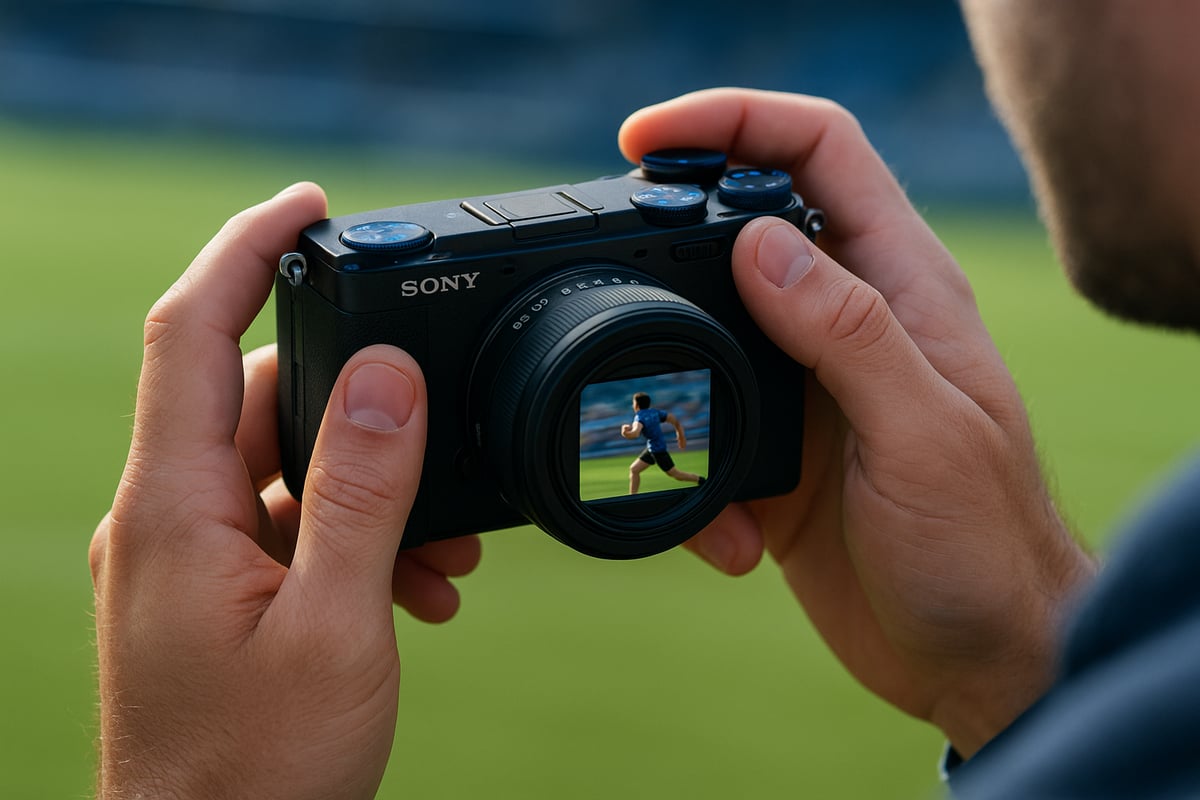
Real-World Autofocus Experience
The heart of any sony a7c review is the autofocus system, and here the A7C does not disappoint. With 693 phase-detection and 425 contrast-detection points, coverage is nearly edge to edge. This means you can confidently compose off-center, knowing your subject will stay sharp. Real-time tracking and Eye AF are not just marketing terms—they genuinely deliver. I have used the A7C for both portraits and wildlife, and its ability to lock onto a subject’s eye, human or animal, is uncanny.
In low light or when working with backlit subjects, the autofocus remains reliable. Even with adapted lenses, the system rarely hunts or misses. For photographers who enjoy street or travel shooting, this kind of dependability is gold. If you want more technical breakdowns and competitive comparisons, the Sony A7C Review by SLR Lounge offers a detailed look at how the AF stacks up in practical scenarios.
Speed and Buffer Depth
Speed is another area where the sony a7c review stands out. The camera shoots up to 10 frames per second with AF/AE tracking, which is more than enough for most sports or wildlife situations. The buffer is deep enough for about 45 RAW files before it starts to slow down, so you are unlikely to miss a critical moment during short bursts.
Shooting with the A7C, I found the continuous autofocus keeps up with erratic movement, such as birds in flight or children running across a park. The camera rarely loses focus, and the transition between subjects is smooth and predictable. For those used to older Sony models or entry-level cameras, the difference in tracking speed is immediately obvious.
Customizing AF modes is straightforward. You can assign tracking or Eye AF to almost any button, which helps adapt the camera to your shooting style. This flexibility is a major selling point for photographers who work across multiple genres.
Handling and Ergonomics
No sony a7c review would be complete without touching on handling. The compact body feels sturdy thanks to its magnesium alloy frame, yet it is light enough for all-day shoots. The grip is comfortable for small and medium hands, though those with larger hands may want to add an optional grip extension for added security.
Button placement is logical, and frequently used controls are within easy reach. The menu system, while deep, is familiar to anyone who has used a recent Sony body. Custom menus and My Menu shortcuts help streamline access to your most-used settings.
Battery life is a pleasant surprise. The NP-FZ100 cell powers through extended sessions, easily lasting for a full day of mixed stills and video. For travel or event photographers, this reliability means fewer interruptions and more focus on capturing the moment.
Whether you are shooting fast-paced sports, candid street moments, or long events, the Sony A7C proves itself as a capable and responsive partner. Its autofocus, speed, and handling combine to offer a shooting experience that is both intuitive and powerful.
Video Capabilities and Content Creation
Capturing high quality video in a compact form has always been a challenge, but the sony a7c review shows that this camera is built for creators who want professional footage without the extra weight. Whether you are a vlogger, filmmaker, or hybrid shooter, the A7C brings serious video features to the table.
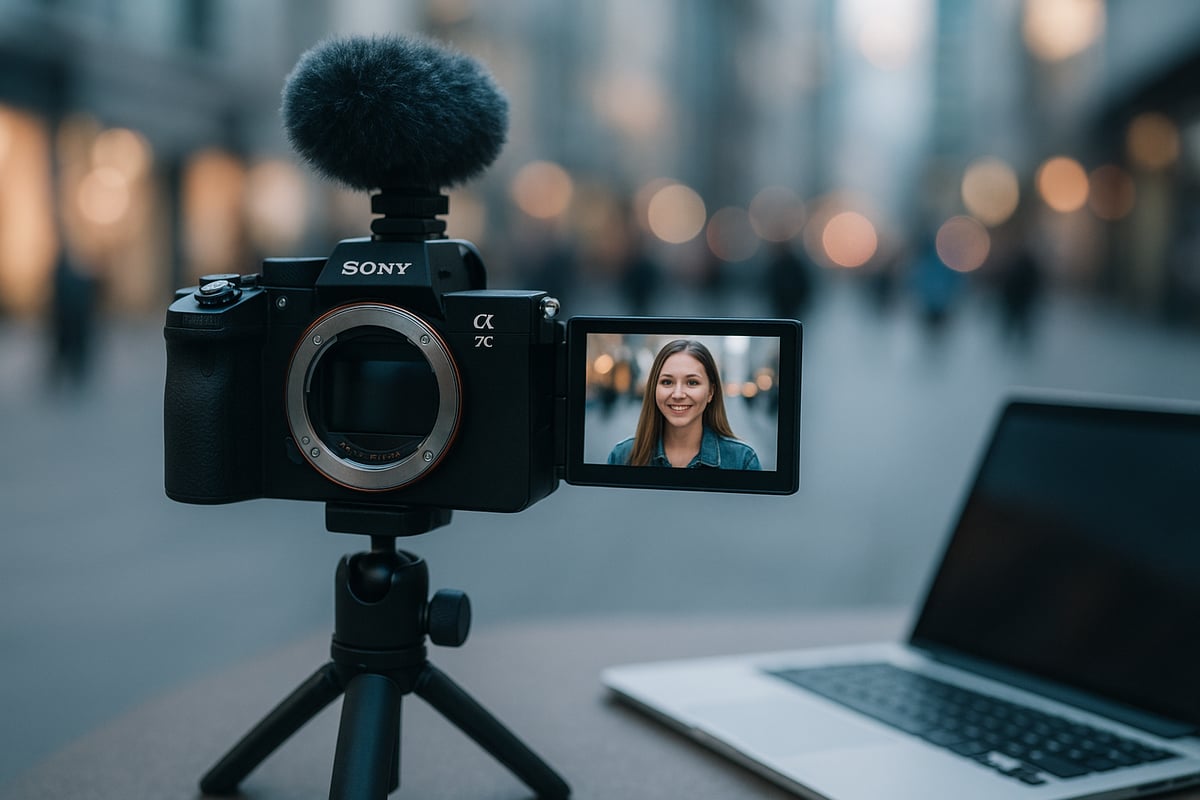
4K Video Quality and Creative Profiles
The sony a7c review highlights 4K video recording that is oversampled from 6K, resulting in crisp detail and minimal artifacts. Footage is available at up to 30p and 100Mbps, delivering both flexibility and quality for most creators. S-Log3 and HLG profiles unlock advanced color grading, while standard creative looks are ready for quick publishing. Rolling shutter is present but manageable, especially for static or slow panning shots. With a full frame sensor, low light performance is strong, letting you shoot clean video even at higher ISOs.
Autofocus and Subject Tracking in Video
One of the standout features in any sony a7c review is the camera’s autofocus system during video. Real time tracking and Eye AF work reliably for both humans and animals. When you are filming yourself, the camera keeps your eyes locked in focus, even with unpredictable movement. Focus transitions are smooth and natural, with minimal hunting, which is crucial for interviews or dynamic scenes. Customizable AF speeds also let you set the look you want, whether cinematic or snappy.
Audio and Connectivity for Content Creators
Audio matters just as much as visuals for content creators. The sony a7c review notes a standard microphone input, headphone jack, and compatibility with Sony’s digital hot shoe microphones. This setup means you can monitor audio in real time and record cleaner sound straight into the camera. Wireless connectivity options include Wi Fi and Bluetooth, making it easy to transfer footage or control the camera remotely via a smartphone app.
Stabilization and Handheld Shooting
Handheld video is a breeze thanks to the in body 5 axis stabilization system. The sony a7c review reports up to 5 stops of shake reduction, which, combined with digital stabilization, allows for smooth walking shots and handheld pans. While it is not as advanced as the larger A7 series, it is more than capable for vlogging, run and gun shooting, or travel video. Lightweight gimbals pair perfectly with the small body for even steadier results.
Vlogging Experience and Real-World Workflows
Vloggers will appreciate the flip out vari angle LCD, which makes framing yourself simple, whether you are at home or on the move. The compact body slips easily into a small bag, so you are never weighed down. Battery life is solid for all day shooting, and USB C charging keeps things convenient. In my experience, the A7C fits seamlessly into a creator’s workflow, from capturing travel diaries to producing polished YouTube content.
Comparison: A7C vs Canon EOS R8 and Panasonic S5 II
When comparing the A7C to rivals like the Canon EOS R8 and Panasonic S5 II, the sony a7c review consistently finds Sony’s autofocus and color science to be a cut above for video. The Canon offers uncropped 4K 60p, but with less robust AF and stabilization. Panasonic’s S5 II brings phase detect AF and strong color profiles, yet the body is noticeably bulkier.
Final Thoughts for Video Creators
If you are weighing options for a compact, reliable video camera, the sony a7c review demonstrates that this model delivers a rare balance of portability, image quality, and creator focused features. Its autofocus, stabilization, and audio options make it a smart choice for anyone making content in 2025.
Lenses, Accessories, and System Compatibility
Selecting the right lenses and accessories is at the heart of any sony a7c review. The camera’s system compatibility is a major reason it appeals to such a wide range of photographers, from seasoned pros to those stepping up from APS-C bodies. In 2025, the E-mount ecosystem is as robust as ever, offering versatility without sacrificing portability.
E-Mount Lens Compatibility and Choices
One standout feature you notice in any sony a7c review is its full compatibility with Sony’s entire E-mount lineup. This means you can pair the A7C with premium G Master lenses, Zeiss optics, or more affordable and lightweight options. In 2025, there are well over 70 native full-frame E-mount lenses, not counting APS-C or adapted glass.
The A7C’s compact build pairs especially well with pancake primes and travel zooms. Even with larger lenses, the magnesium alloy chassis handles the weight better than you’d expect for such a small body. Whether you’re shooting landscapes, portraits, or events, the system’s flexibility is a real advantage.
Recommended Lenses for Every Genre
If you’re building a kit based on your needs, the choices can be overwhelming. For travel, the FE 24-105mm f/4 G OSS offers reach and sharpness in a single lens. Portrait shooters might prefer the classic FE 85mm f/1.8 or the 50mm f/1.2 GM for creamy bokeh. Landscape enthusiasts will appreciate the FE 16-35mm f/4 PZ for its light weight and sharpness edge to edge.
Vloggers and content creators often reach for the FE 20mm f/1.8 G, which balances wide angle coverage with compact size. For a deep dive into lens options and hands-on advice, the Best Lenses for Sony Cameras guide is a solid resource to help you make informed choices.
Autofocus with Third-Party and Adapted Lenses
No sony a7c review is complete without discussing third-party lens compatibility. Sigma, Tamron, and Samyang all offer autofocus E-mount lenses that pair seamlessly with the A7C’s hybrid AF system. In my experience, Sigma’s Art primes focus nearly as fast as native Sony glass, and Tamron’s zooms are ideal for travel or budget-conscious shooters.
Autofocus with adapted lenses has improved, but for best performance—especially Eye AF and real-time tracking—native E-mount lenses are still the gold standard. Third-party options, however, have closed the gap considerably, making the system even more flexible.
Essential Accessories for the Sony A7C
Accessories are where the A7C’s system compatibility really shines. The camera supports Sony’s digital hot shoe for advanced microphones, as well as classic 3.5mm mic and headphone jacks. A small flash like the HVL-F32M, a compact cage for video work, or a lightweight travel tripod can all fit easily into a minimalist kit.
Battery life is impressive thanks to the NP-FZ100 cell. USB-C charging allows you to top up on the go, and wireless connectivity with Wi-Fi and Bluetooth makes remote shooting or instant sharing a breeze. The menu system is customizable, so you can tailor the setup to your workflow, whether you shoot stills, video, or both.
Building a Portable Kit: Travel and Street Example
For those reading this sony a7c review with travel or street photography in mind, here’s a sample setup I’ve used: the A7C body, FE 35mm f/1.8 for everyday shooting, FE 24-105mm f/4 for versatility, a compact flash, and a small messenger bag. The entire kit stays under 2kg—ideal for city walks or carry-on travel.
With over 70 native E-mount lenses available in 2025, you can build a setup that’s tailored to your exact needs without compromise. The accessory ecosystem, from grips to gimbals, only adds to the camera’s flexibility. Whether you’re upgrading or just entering the full-frame world, the A7C’s system compatibility is a key reason it stands out in any serious sony a7c review.
Sony A7C vs Competitors in 2025
Choosing a full-frame camera in 2025 means comparing a crowded field, and any honest sony a7c review must consider how it stacks up against rivals. The A7C continues to attract attention for its compact build, but its place among the best mirrorless cameras is nuanced. Let’s break down the competition, highlight the A7C’s strengths and weaknesses, and see who should pick this camera over others.
Spec Comparison: Sony A7C vs Rivals
Here is a quick glance at how the Sony A7C compares with its main competitors in 2025. This table summarizes the core features that matter most to photographers:
| Camera | Sensor | Weight | AF Points | Max Video | Card Slots | Price (USD) |
|---|---|---|---|---|---|---|
| Sony A7C | 24.2MP Full-Frame | 509g | 693+425 | 4K30p | 1 | $1599 |
| Sony A7 IV | 33MP Full-Frame | 659g | 759+425 | 4K60p | 2 | $2299 |
| Canon EOS R8 | 24.2MP Full-Frame | 461g | 489 | 4K60p | 1 | $1499 |
| Nikon Z5 | 24.3MP Full-Frame | 675g | 273 | 4K30p | 2 | $1299 |
| Panasonic S5 II | 24.2MP Full-Frame | 740g | 779 | 6K30p | 2 | $1999 |
The A7C’s strength is obvious: it is lighter and more compact than its peers, making it a favorite among travelers and street photographers. For a deeper dive into how these cameras stack up, check out the Best Mirrorless Cameras Reviewed for the latest expert analysis.
Strengths and Weaknesses
Every sony a7c review points to its portability as a defining trait. The A7C slips into a small bag, yet offers full-frame performance, making it a compelling choice for creators on the move.
Strengths:
- Compact and lightweight for a full-frame body
- Excellent autofocus with real-time tracking
- Strong 4K video quality for content creators
Weaknesses:
- Small electronic viewfinder can feel cramped
- Only one card slot, limiting redundancy for pros
- Handling with large lenses is less balanced
While the A7C is not perfect, these trade-offs are worth considering based on your shooting style.
User and Pro Feedback
Photographers who value portability consistently praise the A7C’s design in their sony a7c review. Many highlight how the camera’s autofocus system locks onto subjects reliably, even in challenging light. The single card slot is often cited as a limitation for wedding and event shooters, but hobbyists and vloggers rarely see it as a deal breaker.
Professional reviewers also appreciate the camera’s robust image quality, especially for travel and street work. However, some wish for a higher resolution sensor or a larger grip when using heavier glass.
Who Should Choose the A7C?
If you are a travel photographer, street shooter, or vlogger seeking a compact full-frame experience, the A7C remains an outstanding pick. Its lightweight build, reliable autofocus, and strong video specs make it ideal for solo creators and hybrid shooters.
For those weighing it against other Sony options, the Sony Alpha 7 IV Review offers insight into whether the added features and price justify the upgrade.
Ultimately, the sony a7c review makes it clear: if portability and simplicity are top priorities, the A7C stands out in 2025. For those needing dual card slots, a larger EVF, or more pro-focused ergonomics, one of its rivals may be a better fit.
Who Should Buy the Sony A7C? Practical Buying Advice
Choosing a camera is a personal decision that depends on your style, priorities, and workflow needs. This section of the sony a7c review is designed to help you understand whether the A7C is the right tool for your photography journey.
Who Will Love the Sony A7C?
The sony a7c review consistently highlights the A7C’s appeal for photographers who value portability without sacrificing image quality. If you are a travel photographer or street shooter, the compact form factor is a game changer. Vloggers and solo content creators will also appreciate the flip-out screen, reliable autofocus, and excellent battery life.
For those planning their next adventure, the A7C earns a spot among the Best Travel Cameras Guide, thanks to its lightweight build and versatile performance. Hybrid shooters who alternate between stills and video will find the A7C’s feature set covers both needs comfortably.
Where Does the A7C Shine—and Where Doesn’t It?
Based on hands-on experience and feedback from this sony a7c review, the A7C excels in scenarios where discretion and mobility matter. Street photographers enjoy blending in, while travelers benefit from a camera that fits easily into a small bag. The autofocus system is particularly strong for capturing candid moments or fast-moving subjects.
However, this camera is not for everyone. Photographers with large hands or those who prefer a robust grip may find the ergonomics less comfortable, especially with heavy lenses. The single card slot and modest electronic viewfinder might deter professionals who require redundancy and a larger display for critical work.
Upgrading, Budget, and Long-Term Value
If you are upgrading from an APS-C body or an older full-frame, the sony a7c review reveals several advantages. You gain better low-light performance, improved dynamic range, and access to a broader lens lineup. The transition is smooth for existing Sony users, since batteries and accessories are often compatible.
On the budget side, evaluate whether to buy the body-only or kit version. The kit lens is compact and decent for everyday use, but investing in a prime or zoom lens may unlock the camera’s full potential. The A7C holds its value well on the used market, and Sony’s consistent firmware updates ensure longevity.
Real-World Experience and Final Checklist
Photographers who switched to the A7C often cite new creative freedom on the go. For example, a travel vlogger noted how the camera’s size let her film in busy markets without drawing attention. A street photographer appreciated the A7C’s silent shutter and fast Eye AF for capturing fleeting expressions.
Buying Checklist for 2025:
- Do you need full-frame quality in a compact body?
- Will you use the flip-out screen for vlogging or selfies?
- Do you shoot in challenging light or fast-paced environments?
- Are you comfortable with a single card slot and smaller EVF?
- Is portability a top priority for your workflow?
If you answered yes to most of these, the sony a7c review strongly suggests the A7C is a smart investment for your needs in 2025.


